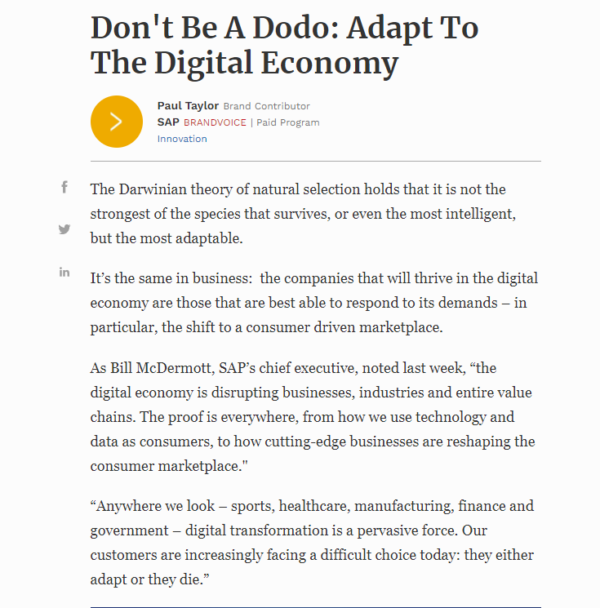Your title sells the click.
Your introduction sells the read.
If your introduction doesn’t motivate readers to make that all-important scroll down, you lose them. You put in the hard work creating your content. Nailing the introduction makes sure your content gets the attention those efforts deserve.
Your title sells the click. Your intro sells the read, says @GeorgeDrennan2 via @CMIContent. #WritingTips Click To TweetThese seven tips can help you craft compelling blog post introductions that get your readers to go beyond the headline.
1. Highlight a common problem
People read content for the value it offers. For business blogs, that usually means a solution to a problem. By highlighting a pain point in your introduction, you immediately grab the readers’ attention. It tells them they’re in the right place. You understand their problem.
Here’s an example from Ahrefs:

In the above example, the second paragraph reads: “Sound like you? You’re in the right place.”
Once you’ve agitated the pain point, you need to deliver a solution in the rest of your content.
2. Tell readers what to expect
When you agitate a pain point, you start a ticking clock. If you don’t tell your audience how you will help, they’ll quickly lose patience and bounce.
Your introduction needs to set out the expectations and answer the reader’s question: Is this worth my time?
Your intro needs to answer the reader’s question: Is this worth my time? @GeorgeDrennan2 via @CMIContent #WritingTips Click To TweetBy telling your audience what they can expect, you make that decision much easier.
Here’s an example from Shopify:

This introduction acts as the thesis of the content – what will be covered, in what order, and what the audience can expect to take away.
Few visitors read content from start to finish. Laying out your thesis helps people to find the information they need quickly. They can go to a specific section, consume the entire piece, or recognize the content isn’t going to deliver what they need.
3. Explain the benefits
Some people read a blog post because they want to learn something that will help them to improve their lives. Whether it’s instructions on how to make pancakes or a guide on how to increase customer retention, your readers want results.
Make your introduction more compelling by selling the benefits of your content. What will reading your blog post help them to do?
Here’s an example from Backlinko:

The introduction lays out the article’s benefits in unambiguous terms. Make it clear what your content is about and how your audience can benefit from reading it.
4. Ask a question
When you ask a question in your introduction, you invite the reader to ponder an answer. You actively think about the topic from the outset.
Here’s an example from Neil Patel:

When you use a question in your introduction, you must back it up with an answer or answers in the content.
5. Take a stand
Conflict is the essence of drama. Anyone who has studied storytelling knows the importance of confrontation in creating tension and engaging an audience.
When it comes to blog post introductions, you can create confrontation by challenging a long-held belief or strategically taking aim at a controversial topic in your niche.
Create conflict by challenging a long-held belief in your intro, says @GeorgeDrennan2 via @CMIContent. #WritingTips Click To TweetHere’s an example from AllBusiness:

A confrontational introduction typically results in three reactions:
- Readers disagree.
- Readers agree.
- Readers wonder why you’re challenging the topic.
In all three cases, they keep reading to find out more. They are going to want to know how you reached that conclusion.
6. Use a quote
Quotes can be a great way to lend credibility and create a compelling lede. A quote can back up your thesis and provide a framework to structure the rest of your content.
A quote can summarize a conventional belief or best practice and construct a counterargument in your content.
Here’s an example from Forbes:

Similar to question-based introductions, quote-based openings can become a crutch for lazy writing. It’s easy to fall into a habit of using the words of an established voice rather than constructing an original argument. Use them sporadically.
Avoid quotations overused in your niche (a la “content is king” in marketing). Use quotes from unexpected voices or source original quotes from thought leaders.
7. Write the introduction last
The introduction is the first thing your readers see, but it often should be the last thing you write for two reasons.
The introduction is the first thing your readers see, but it often should be the last thing you write, says @GeorgeDrennan2 via @CMIContent. #WritingTips Click To TweetFirst, the introduction is more important than any other paragraph in the post. Every word counts. When you start a new piece of content, it’s easy to waste time trying to craft the perfect introduction. It’s more efficient to get started by writing your main points.
Second, you understand the topic better once you have written the meat of your content. You may find that introduction you spent hours crafting no longer fits your central thesis once you finish the rest of the piece.
If you have a moment of inspiration, write a brief introduction as a placeholder. You can return to it once you’re done with the rest of the post.
Open strong
Your introduction is super important. It convinces people to keep reading or sends them back to the search results page or to read something else. Using these tips, you can create a compelling introduction for your next blog post.
Try different tactics and keep an eye on your analytics to see what works for your niche and writing style.
Cover image by Joseph Kalinowski/Content Marketing Institute


